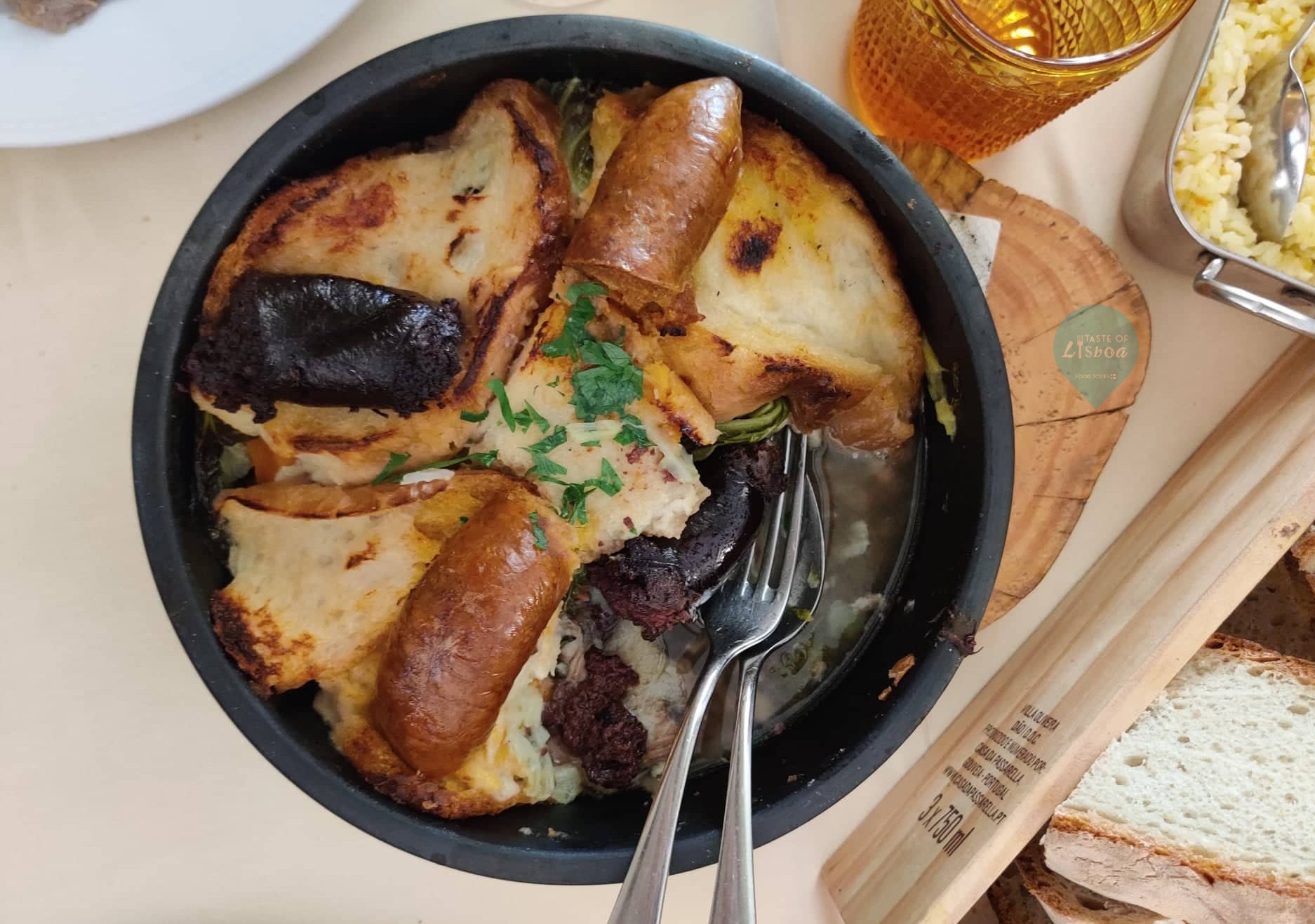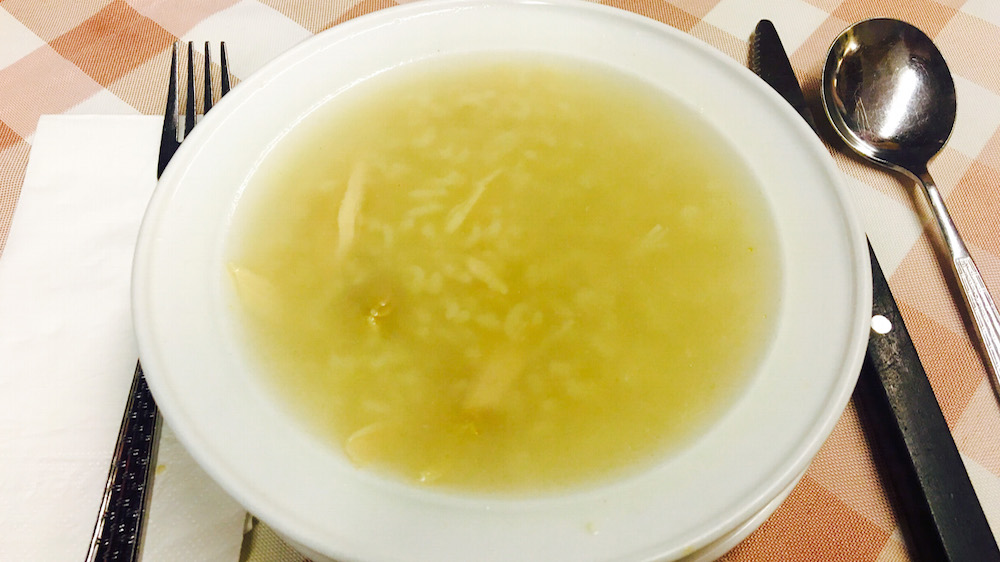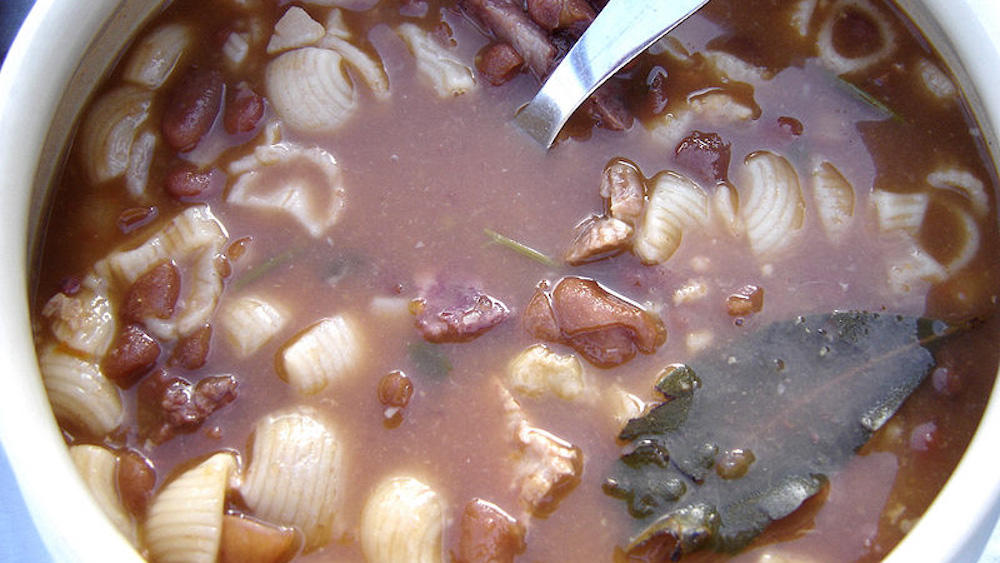Ultimate guide to the best Portuguese soups – Part 2: Non-vegetarian soups from Portugal

Welcome back. This article gives continuity to the previous published ULTIMATE GUIDE TO THE BEST PORTUGUESE SOUPS – PART 1: Vegetarian soups from Portugal
In this second part of this guide we will introduce you to the most hearty Portuguese winter soups in which the king ingredient is meat or fish. In fact, although we gradually start to give more room to vegetables on our plates, soups are still the main source of vegetable consumption in Portuguese eating habits. When we talk about soups that may well be a complete meal, then they take meat or fish in its recipe. And these ones can turn into a real feast. Get to know them:
CANJA DE GALINHA

You can find variations of chicken stock or soup a little all over the word. But canja, the soup in itself, its name, and its diffusion inside Portugal, have a very interesting history behind it.
It’s believed that chicken soup originated in India, in the southern state of Tamil Nadu. In this Indian version of canje or kanji, the soup consisted of a rice porridge flavored with herbs. The chicken stock and bits were only later added to enrich the soup, and the Portuguese that reached the Sub-Continent by the 15th century are actually believed to have been involved in this recipe adaptation. Kanji eventually traveled further within Asia, becoming congee in China and jook in Thailand.
The Portuguese also brought the recipe to Europe, and thus canja became a popular recipe in Portugal too, now most commonly prepared with tiny orzo pasta rather than rice. While canja made with chicken is a recipe in itself, the truth is that canja is also considered a method of soup cooking, and technically can be made with other proteins such as fish, seafood, shells, various birds, and even meats like rabbit (canja de coelho).
We share with you the recipe for Portuguese chicken soup below.
SOPA DA PEDRA

This soup-going-on-stew recipe gained fame in the 60s, after a popular folk tale that tells the story of a starving friar. According to the moralistic tale set in the town of Almeirim in the Ribatejo region, this friar requests a couple of locals for some assistance to make a soup. He already had a stone and was simply asking for water. The locals dumbfounded asked “how are you going to make soup with just water and a stone?” and so, little by little, he tricked them into adding a little bit of this and a little bit of that.
The end result? One of the richest and most loaded soups of the Portuguese repertoire. Sopa da Pedra features a rich broth with lots of ingredients swimming in it: vegetables, kidney beans and a variety of cured meats. And no actual stone. It’s officially just a soup, but no one will be surprised if you also see it as a full meal.
FISH AND SEAFOOD SOUPS

All across the country you will find several versions of rich soups featuring fish and seafood. The most popular include:
Sopa de peixe: Fish soup is usually a rich tomato infused stock with actual pieces of fish, which may depend on the recipe variation or the catch of the day.
Creme de mariscos: There is no one standard recipe for cream of seafood and, like many recipes made with seafood, it depends on what you have available as ingredients and largely on the budget too.
Sopa de conquilhas: This clam soup from the southern Algarve region is also worth a mention. Expect to find plenty of chunky donax clams swimming on your plate.
Sopa de cação: Yet another highlight of Alentejo cuisine, pictured above, this time featuring coriander or pennyroyal infused broth with slices of dogfish, a creature from the shark family.
OTHER PORTUGUESE SOUPS ALSO WORTH TO MENTION:
The soups described above are indeed the most commonly consumed all across Portugal. But there are other regional specialities which you may come across while traveling around the country, particularly beyond urban areas, or perhaps during specific times of the year. If you are lucky enough to come upon any of the soups below, consider yourself lucky and do not miss out on the opportunity to savor Portuguese liquid culture.
 Caldo de unto (also known as água de unto): lard and onions based broth, served over slices of rye bread. Back in the day, it used to be a typical and warming breakfast for northerner peasants and shepherds who’d have to face the cold during the work day.
Caldo de unto (also known as água de unto): lard and onions based broth, served over slices of rye bread. Back in the day, it used to be a typical and warming breakfast for northerner peasants and shepherds who’d have to face the cold during the work day.
Sopa de casúlas (also known as caldo de cascas): this bean pod soup is an institution in the province of Trás-os-Montes. After a careful process of sun drying and rehydration, this no-waste recipe makes the empty bean pods the star of the dish.
Sopa de beldroegas: this soup is made with wild purslane and it’s believed to have incredible medicinal value. This is a seasonal plant and you are most likely to come across this soup in the Alentejo, particularly if invited to dine at a local’s home.
Caldo de castanhas piladas: this pureéd chestnut soup is eaten in the Minho region of Portugal. This is northern Autumn in a bowl of soup.
Sopa de sarapatel: if you are familiar with Indian food, particularly from the Goan region, you might have heard of sarapatel. While in India, sarapatel stands for a curry made with meat, offal, blood and seasonings, here in Portugal sopa de sarapatel is a thinner version which has a lot in common with the spicier version from the Sub-continent, which actually is an adaptation from the Portuguese recipe.
In this case, the typical soup from the Alentejo region is usually made with lamb or goat. But other bloody soups can also be found across the country, featuring different meats such as pork, like in the case of sopas de sarrabulho from Minho or sopas de sangue from Trás-os-Montes.
Sopa de sarapatel, as well as the other soups which include blood, is associated with the slaughter season, not only because every part of the animal must be used, but also because people do appreciate the taste and nutritional
value of cooked animal blood. You are most likely to find these soups in rural settings, where people still raise and slaughter their own cattle.
Sopa seca: this so-called “dry soup” challenges many folks’ idea of what a soup is all about, once there is almost no broth. Instead, the plate is toped with slices of bread and piled boiled ingredients which are leftover from making recipes such as cozido à portuguesa, our typical meat stew, and putting in the oven for grating.
BONUS RECIPE – PORTUGUESES CHICKEN SOUP
What would be the point of making your mouth water is we didn’t give you an easy fix to your cravings after reading about the best Portuguese soups? To quench your thirst for these comforting Portuguese concoctions, of course we recommend a visit to our country, where you can try all of these soups and more. But if this is not possible at the moment, we leave you with a suggestion for this simple recipe you can make easily at home.
Canja de galinha – Ingredients for 4 servings:
Half a chicken (about 500g)
1 onion
1 garlic clove
100g orzo pasta (or another kind of tiny pasta to taste)
1 tsp salt
Preparation:
In a pot, cover the chicken with plenty of water, and boil along with the chopped onions, garlic and salt. Once the meat is tender, take out the chicken. While the chicken cools down a little, boil the pasta inside the stock. With your hands, pull the meat away from the bone, shred and add to the soup. Easy and so satisfying!
To know more about Portuguese vegetarian soups, click on the ULTIMATE GUIDE TO THE BEST PORTUGUESE SOUPS – PART 1: Vegetarian soups from Portugal
Keep warm this winter. Eat Portuguese soups!
If you cook any of the above dishes at home, don’t forget to share a photo with us on Facebook or Instagram. Please tag us @tasteoflisboa #tasteoflisboa
Feed your curiosity on Portuguese food culture:
10 Portuguese cheeses you must try
8 Portuguese female chefs you should know
The national dish of Portugal (it’s not codfish…)
Discover more easy recipes on our blog:
Portuguese Recipes with Canned Fish
Amêijoas à Bulhão Pato – Portuguese Recipe for Clams
The Best Chocolate Cake in the World
Real people, real food. Come with us to where the locals go!
Join us in our natively curated food & cultural experiences.
Follow us for more at Instagram, Twitter and Youtube
